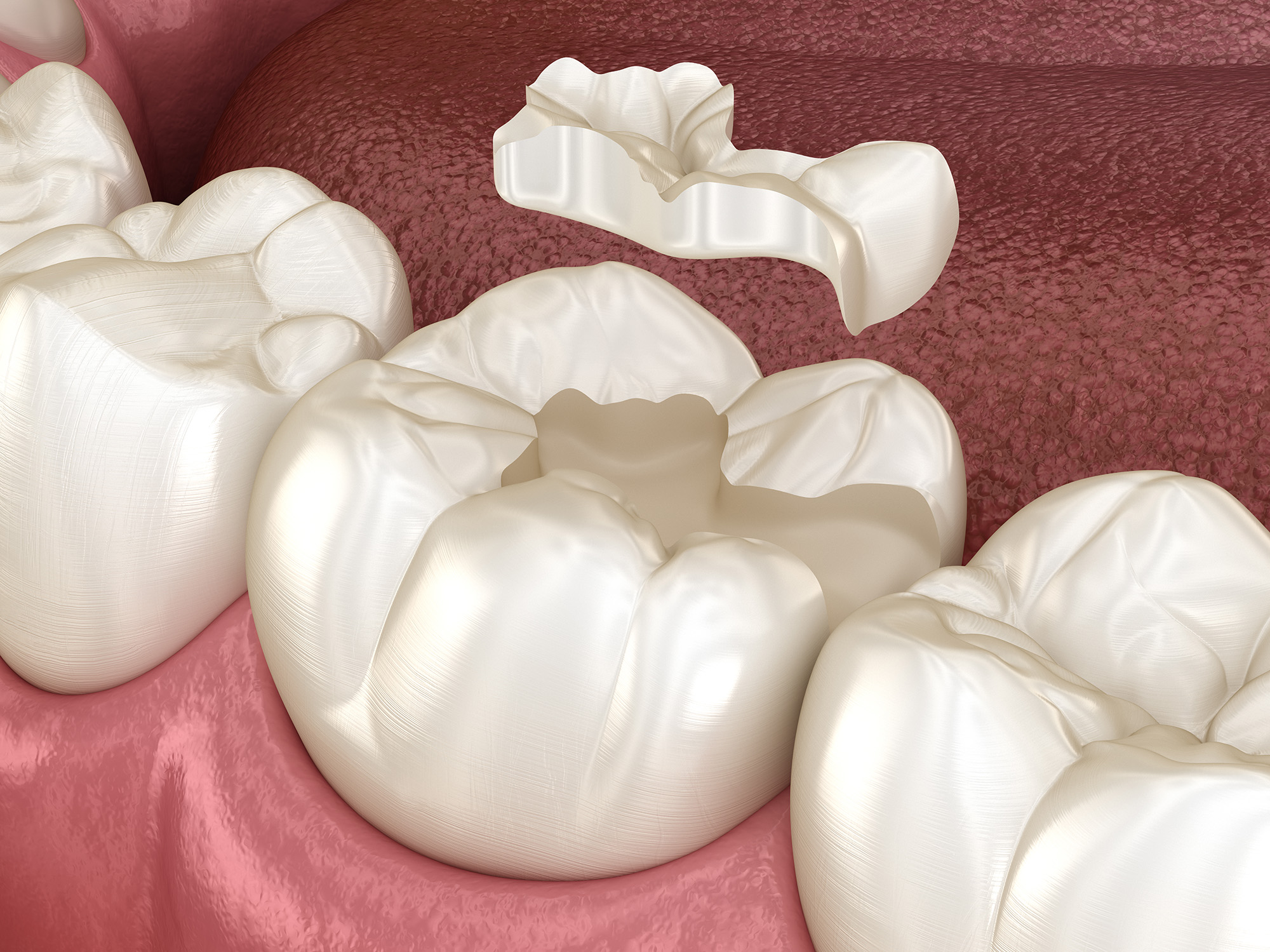Inlays / Onlays
In dentistry, inlays and onlays are a form of restoration designed and finished outside of your mouth as a single, solid piece, that is the unique size and shape needed to replace your cavity. The restoration is then carefully cemented in place and is an alternative to restoration made of composite that is built up inside the mouth.
Inlays and onlays are used in molars or premolars, when the tooth has experienced a greater than 30-60% damage and can not sufficiently support a basic filling, but not having so much damage that a crown is required.

What’s the difference between an Inlay/Onlay?
The key difference is the amount and part of the tooth that they cover. An inlay incorporates the pits and fissures of a tooth, mainly encompassing the chewing surface between the cups, whereas an onlay will involve one or more cusps being covered. Should all cusps and the entire surface of the tooth require cover, then Dr. Chisler or Dr. Spandau will prescribe a crown as part of the treatment.
Why choose an Inlay/Onlay over a plastic filling?
- The amount of tooth material removed is less, so inlays and onlays tend to be more conservative and esthetic. The inlay and onlay procedures strengthen a tooth’s structure as compared to fillings where the structure may be weakened due to removing too much tooth material.
- Inlays and onlays are also likely to last longer than a regular filling, because the inlay or onlay material is custom made and bonded or fused to the tooth. The porcelain is stronger then plastic.
- Inlays or onlays will not discolor as resin fillings usually do.
- Inlays and onlays are custom made and they fit better and do not shrink or change size during the curing process, this makes it a lot easier for you to clean or brush your teeth.
- Inlays and onlays look more like natural teeth.
